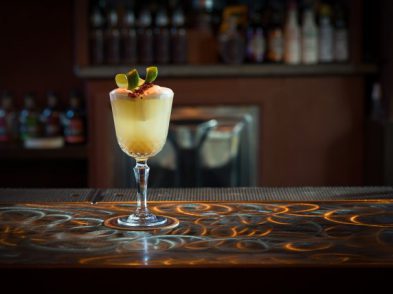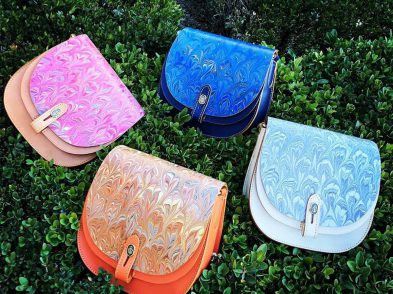Scott Schuman is a photographer and blogger best known as the Sartorialist. Since its inception in 2005, his eponymous blog has been a driving force in both the fashion industry and fashion blogging, as well as being a showcase of one man’s passions. We had the pleasure of interviewing Schuman about his feelings on fashion, photography, and why he thinks Florence’s young designers have a very bright future ahead of them.
What does it take to be photographed by you? What do you look for in a subject?
There isn’t anything in particular that will get you photographed by me. It’s just what seems pleasing to me, to my eye at that particular moment. It really is any of the things that you mention-the way they are dressed, that is to say, the clothes themselves. But that isn’t necessarily the only deciding factor, not by a long shot. Confidence, of course, is key. That can certainly be the difference in deciding whether I ask for a shot or not-of course, the individual has to be wearing the clothing and not the other way around. It’s simply a question of if I like what I see.
What first attracted you to Florence?
I first came to Florence on assignment, so to speak, for Pitti Uomo. But once I arrived, I really enjoyed it here! The quality of the people is something that I had seldom encountered before. Everything, from the food to the quality of goods to, most importantly, I repeat, the people here leaves me with the best impression of Florence. Certain shops and restaurants I will certainly return to, and Florence is definitely a place where I could see bringing my family on vacation.
Do you approach your subjects in different ways in different cities? Do you see a distinctive ‘identity’ in each one of the principal cities you feature on the blog?
Sure, there’s a different identity for each city. Shouldn’t there be? The people dress differently in New York and Paris. There’s a certain look in each place. But fashion is fluid; it doesn’t necessarily stay within the prescribed boundaries, especially one so arbitrary as national borders.
Demographically speaking, I don’t practice any sort of ‘affirmative action’ either when selecting my subjects or when choosing which photos to post.
Again, it’s purely aesthetic. I’m going to take pictures of the people who I think embody the spirit of fashion.
Additionally, the distribution of young, old, male, female, and so on, does tend to work itself out on the blog. And of course there are certain subjects that I go back to whenever I’m in a particular city-a lot of them are colleagues or former colleagues in the fashion industry, and we almost always end up at the same shows. But for the most part, it really depends on the day-whoever’s out. I can’t determine who they might be.
How does the fashion of Florence set itself apart from the rest of Italy?
The people here are less aggressively trendy than the Italians in Rome or especially Milan. This isn’t to say, of course that Florentines aren’t aware of the trends; but they dress themselves in a more classic, timeless manner. Much to my regret, I’ve only been to Florence a couple of times, and only for Pitti Uomo, so I also don’t necessarily have the same kind of exposure to daily Florentine fashion the same way that I have in, say, Milan. This of course is something that I hope to remedy in the near future!
What appeals most to you about how people dress in Florence?
The classicism of Florentine fashion appeals to me. It has been the absence of the importance of ‘trend’ that interests me here in Florence. For example, I chose to photograph many of the older gentlemen in Florence because of their timelessness. Even when I’m focusing on the trends, they are subtle ones, such as rolled-up jacket sleeves or exposing colorful hosiery. Most often, I notice them as details within the ensemble-not as a stand-alone trend.
What is your favorite thing about Florence, fashion-related or not?
The people, of course. The sincerity of Florentines is something that really attracted me to the city once I arrived and plays a great part in why I want to come back here-to get to know the people even better, to have my family know them, too. There is genuineness to the people of Florence that I have seldom encountered elsewhere.
When our paper wants the honest truth, we go to the streets and engage people. Getting opinions directly from the people is the way that we get to the crux of an issue. Are you doing something similar? Is this why you chose street photography instead of high fashion? What do you see within your subjects that are unique, that cannot be found in any other genre of fashion photography?
What I like about street photography is the extemporaneous nature of it. When I was working in fashion, it was always such a process to set up the shoot, go through all the prep work, and so on. I certainly loved it, and I still think that high-fashion photography is an art unto itself, but eventually it just wasn’t for me anymore. I needed a more accommodating schedule to take care of my daughter, and the shoots became too time-consuming. I turned to street photography because I saw there was the same caliber of style in my everyday life, yet no one was documenting it. Also, as we all know, high fashion is a very idealistic discipline-for instance, the collections are presented far in advance, and they rarely represent what’s going on contemporaneously.
On the other hand, taking photos of what people are wearing today gives a much better insight into contemporary events. Of course, I’m alluding to the current economic climate. The effect of something like that can’t really be seen in spring/summer 2009 collections, but can be seen on the various individuals I see and photograph on the streets of New York City. To me, street photography brings a sense of verity and bridges the sometimes-wide gap between fashion and society. I think another benefit of being a street photographer is seeing first-hand how certain couture or high-fashion pieces translate into everyday or prêt-a-porter ensembles.
Florence is trying to re-assert itself as a fashion destination, especially in the field of women’s wear. With the re-emergence of Pitti_W and many local designers flourishing regionally, what do you think the future holds for high fashion in Florence?
I definitely think there is a future for high fashion in Florence. What you have to do is nurture young talent. Give them a reason to stay in Florence! I see so many younger designers opening stores here in Florence, stores with some really interesting pieces, designers with real talent-keep them here! Pitti _W is a great example of that: it’s giving these younger designers, ones that might have fallen off the radar in Milan, a chance to prove themselves in front of the same cognoscenti that would have been at Fashion Week. Then, once they have gotten their names out there, they remind the world that Florence is still the place to be, that their work was recognized and admired by the home crowd. Stores that cater to the Florence set don’t necessarily require the international names to bring them into the store. That is the kind of business, the kind of designer, that will be on hand for the revival of fashion in Florence.




